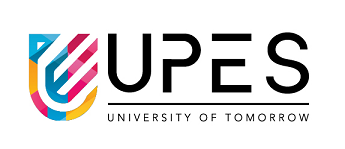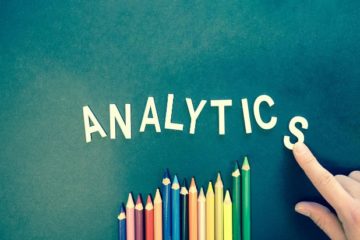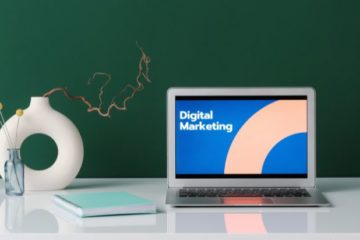Brand Manager Interview Questions Asked to Freshers and Professionals

Table of Contents:
- Commonly Asked Questions
- Topical Questions
- Scenario Based
- Technical Questions
Give Brand Manager a product, a target audience, and a blank canvas. They’ll weave together market trends, cultural nuances, and a dash of artistic magic to transform them into a brand that sparks desire, builds loyalty, and leaves a lasting impact. Ready to be a brand alchemist, turning ordinary into extraordinary.
Frequently Asked Interview Questions
- Tell me about a successful branding campaign you developed and implemented. What were the key metrics you used to measure its success?
- Ans- In my previous role at [Company], I spearheaded the launch of a new eco-friendly product line. We developed a campaign centered around sustainability and ethical sourcing, featuring influencer partnerships and targeted social media ads. We saw a 20% increase in sales within the first quarter, along with a significant boost in brand sentiment and positive online reviews.”
- How do you stay up-to-date with the latest trends and changes in the market, especially as they relate to your target audience?
- Ans- While launching a limited-edition product line, I embraced bold packaging design that reflected the theme. However, I ensured it adhered to core brand elements like color palette and logo placement. This maintained brand recognition while injecting a fresh, creative element.
- Describe a situation where you had to balance the need for creative brand expression with the need for consistency and adherence to brand guidelines.
- Ans- While launching a limited-edition product line, I embraced bold packaging design that reflected the theme. However, I ensured it adhered to core brand elements like color palette and logo placement. This maintained brand recognition while injecting a fresh, creative element.
- How do you measure the effectiveness of your social media marketing efforts? Share an example of a successful social media campaign you’ve run.
- Ans- For a recent social media campaign, we tracked key metrics like engagement rate, click-through rate, and brand mentions. We saw a 30% increase in engagement thanks to interactive content like polls and Q&A sessions, and achieved a 15% conversion rate on product links in our posts. This demonstrated the campaign’s effectiveness in driving traffic and sales.
- Can you walk me through your process for developing and executing a branding strategy for a new product or service?
- Ans- “My branding strategy process starts with thorough market research and competitor analysis. Then, I define the target audience and brand positioning. Next, I collaborate with design and marketing teams to develop a brand voice, visual identity, and messaging guidelines. Finally, I create an implementation plan for consistent brand application across all touchpoints.”
- How do you collaborate effectively with cross-functional teams, such as marketing, design, and product development, to ensure brand consistency?
- Ans- “I regularly hold cross-functional meetings with marketing, design, and product development teams to ensure brand consistency. We use shared brand guidelines and project management tools to keep everyone aligned. I also encourage open communication and feedback to address any discrepancies or concerns.”
- Give an example of a time you had to deal with a crisis or negative publicity related to your brand. How did you handle it?
- Ans- When a negative review about product quality went viral, I promptly addressed the issue on social media, acknowledging the customer’s concerns and outlining steps we were taking to improve. We offered a replacement product and a sincere apology, which helped mitigate the negative impact and demonstrate our commitment to customer satisfaction.
- What experience do you have with budget management and resource allocation for branding initiatives?
- Ans- In my previous role, I managed a (budget figure) branding budget for a product launch. I allocated funds strategically, prioritizing influencer partnerships and targeted digital advertising to reach our target audience effectively. I also secured sponsorships and negotiated cost-effective partnerships to maximize our budget impact.
- What are your biggest strengths and weaknesses as a brand manager? How do you address your weaknesses?
- Ans- My strengths lie in creative storytelling and translating brand strategy into actionable campaigns. However, I recognize I can sometimes get too invested in my initial ideas. To address this, I actively seek feedback from colleagues and conduct thorough A/B testing before full-scale implementation.
- Tell me about a time you had to make a difficult decision that impacted your brand. What was the decision and how did you come to it?
- Ans- When faced with choosing between two brand ambassadors, I had to make a tough call. While one had a larger following, the other better embodied our brand values and resonated more authentically with our target audience. Ultimately, I opted for the latter, prioritizing brand fit over pure reach, which led to a successful long-term partnership.
“Tell me about the most challenging project you managed and how you overcame the challenges appears in 60-70% of brand manager interviews.”
Concept & Topical Questions
1. Brand Positioning:
Que– How would you develop a brand positioning statement that is compelling, differentiates your brand from competitors, and resonates with your target audience?
Answer: “To craft a powerful brand positioning statement, I would focus on three key elements:
- Unique Value Proposition (UVP): What sets your brand apart from the competition? What specific need or desire does it fulfill for your target audience?
- Target Audience: Who are you trying to reach with your brand? Understanding their demographics, psychographics, and values is crucial.
- Brand Essence: What is the core personality and message you want to communicate?
- Combining these elements, I could create a statement like: “[Brand Name] empowers adventurous millennials to explore the world through sustainable, high-performance outdoor gear.”
2. Storytelling:
Que- How do you utilize storytelling to connect with your audience and build brand loyalty?
Answer: “Effective storytelling goes beyond simply listing product features. It taps into emotions, evokes shared experiences, and creates a strong connection with your audience. Some ways I leverage storytelling include:
- Customer testimonials and case studies: Sharing real-life stories of how your brand has positively impacted people’s lives.
- Branded content and video narratives: Creating engaging content that showcases your brand values and resonates with your target audience’s interests.
- Social media engagement: Utilizing interactive platforms to create dialogues and encourage user-generated content that amplifies your brand story.”
3. Brand Consistency
Que- How do you ensure brand consistency across all touchpoints, from marketing materials to customer service interactions?
Answer: “Maintaining brand consistency requires a holistic approach:
- Brand guidelines: Developing clear and comprehensive guidelines that define everything from logo usage and brand voice to messaging and photography.
- Internal training: Educating all employees on the brand guidelines and values to ensure consistent representation across departments.
- Quality control: Implementing processes to review and monitor all brand communication channels for adherence to guidelines.
- This ensures a seamless and unified brand experience for customers, regardless of how they interact with your brand.”
4. Data-Driven Marketing
Que- How do you utilize data and analytics to inform your branding decisions and track the effectiveness of your campaigns?
Answer: “Data is a powerful tool for brand managers. Some ways I use it include:
- Identifying target audience segments and tailoring messaging accordingly.
- Measuring the performance of marketing campaigns and optimizing them for better results.
- Tracking brand sentiment and responding to customer feedback.
- Understanding competitor strategies and market trends to inform future branding decisions.
- By utilizing data effectively, I can make informed decisions, optimize campaigns, and ensure my branding efforts are aligned with market realities and audience needs.”
5. Brand Crisis Management
Que- How would you handle a negative public relations situation or online crisis related to your brand?
Answer: “Proactive preparation and swift action are key in brand crisis management. My approach would involve:
- Assessing the situation quickly and identifying the source of the crisis.
- Communicating transparently and honestly with stakeholders, including customers, employees, and the media.
- Developing a plan to address the issue and mitigate any potential damage.
- Monitoring the situation closely and adapting the response as needed.
- Learning from the crisis and implementing preventative measures to avoid similar situations in the future.
Scenario Based Questions
Scenario-based questions are an effective way for interviewers to understand how you might handle real-world situations in a project management role. Below are some scenario-based questions along with suggested answers.
- Negative Online Review:
Que- You discover a viral negative review on a popular social media platform criticizing your brand’s customer service. How would you handle this situation?
Answer:
- Acknowledge the situation promptly: Publicly respond to the review within 24 hours, expressing concern and apologizing for the negative experience.
- Gather details privately: Reach out to the reviewer directly via private message to understand their complaint fully and offer further assistance.
- Take ownership and offer solutions: Work with relevant teams to address the issue behind the complaint and offer a sincere solution to the reviewer, potentially including compensation or an improved service experience.
- Use it as a learning opportunity: Analyze the situation internally to identify any systemic issues and implement preventative measures to avoid similar situations in the future.
- Communicate the resolution publicly: Once the issue is resolved, share an update on the social media platform, demonstrating responsiveness and commitment to customer satisfaction.
- Unexpected PR Crisis:
Que- A product launch campaign accidentally features offensive content, sparking public backlash and media scrutiny. How would you navigate this crisis?
Answer:
- Assemble a crisis response team: Gather key stakeholders from marketing, communications, legal, and other relevant departments to develop a unified response strategy.
- Immediately take down the offensive content: Stop all promotion of the campaign and remove the harmful content from all channels.
- Issue a public apology: Craft a transparent and sincere apology acknowledging the mistake and expressing empathy for those affected.
- Conduct a thorough internal investigation: Identify the cause of the issue and implement measures to prevent it from happening again.
- Proactively engage with the media and public: Be available for interviews and address concerns openly and honestly. Demonstrate a commitment to learning and improving.
- Budget Constraints for a Major Campaign:
Que- You’re tasked with leading a major brand campaign but face unexpected budget cuts. How would you adapt your strategy and still achieve impactful results?
Answer:
- Re-evaluate campaign goals and objectives: Focus on core objectives and prioritize essential elements of the campaign.
- Explore alternative, cost-effective channels: Consider leveraging organic reach on social media, engaging with influencers, and partnering with complementary brands for cross-promotion.
- Get creative with content and activations: Develop engaging, low-cost content formats like user-generated content campaigns, interactive challenges, or virtual events.
- Measure and optimize continuously: Track campaign performance closely and adjust spending allocation based on what’s working and what’s not. Showcase the effectiveness of your resourcefulness.
- Conflict with a Cross-Functional Team:
Que- You encounter disagreement with another team (e.g., design or product development) regarding branding aspects of a new project. How would you manage this conflict effectively?
Answer:
- Openly communicate and actively listen: Schedule a meeting to understand the concerns of the other team and explain your own perspective. Practice active listening to find common ground.
- Focus on shared goals and brand vision: Remind everyone of the overall objectives and how your specific branding decisions contribute to achieving them.
- Seek collaborative solutions: Explore compromise options and brainstorm alternative approaches that address everyone’s concerns while maintaining brand consistency.
- Maintain respect and professionalism: Throughout the discussion, prioritize respectful communication and avoid personal attacks or blaming language.
- Present a united front: Once a decision is made, work together to implement it collaboratively and effectively.
- Ethical Dilemma in Influencer Marketing:
Que- You’re considering partnering with an influencer with a large following but who has recently faced controversy surrounding their personal conduct. How would you weigh the potential benefits against the ethical considerations?
Answer:
- Conduct thorough research: Investigate the nature of the controversy and assess the public perception of the influencer.
- Align with brand values: Analyze if partnering with this influencer aligns with your brand’s core values and ethics. Consider the potential impact on brand image and reputation.
- Explore alternative options: Research other potential influencers who better align with your brand and target audience.
- Develop a contingency plan: If you decide to proceed, prepare a communication plan to address any potential criticisms or questions from the public.
- Prioritize brand integrity: Ultimately, prioritize your brand’s long-term integrity and value over short-term gains from a potentially risky partnership.
Technical Questions Asked in Brand Manager Interview
Technical questions in a brand manager job interview often focus on your understanding of project management tools, methodologies, and processes.
- SEO and Content Optimization:
Que- How would you develop an SEO strategy for our brand website to improve organic search ranking and drive targeted traffic?
Answer: “My approach to SEO would involve several key steps:
- Keyword research: Identify relevant keywords with high search volume and low competition that align with our target audience and business goals.
- Content optimization: Optimize existing website content and create new content with these keywords in mind, focusing on quality and user engagement.
- Technical SEO: Ensure the website is technically sound, with fast loading times, mobile-friendliness, and clean code structure.
- Backlink building: Strategically build backlinks from authoritative websites to improve our website’s domain authority and trust in search engine algorithms.
- Analytics and tracking: Continuously monitor website traffic, keyword performance, and other SEO metrics to measure progress and adapt the strategy as needed.”
- Social Media Marketing and Advertising:
Que- Describe your experience with paid social media advertising platforms like Facebook Ads or Twitter Ads. How would you design a campaign to promote a new product launch?
Answer: “I have extensive experience with various social media advertising platforms. For a new product launch campaign, I would:
- Define target audience demographics and interests.
- Develop compelling ad creative visuals and copy that resonate with the target audience.
- Choose the appropriate ad bidding strategy and budget allocation based on campaign goals and budget constraints.
- Track key performance indicators (KPIs) like impressions, clicks, conversions, and cost per acquisition (CPA) to optimize the campaign in real-time.
- **Utilize A/B testing to determine the most effective ad formats, targeting options, and messaging.”
- Email Marketing and Automation:
Que- How would you leverage email marketing automation to nurture leads, engage customers, and drive sales?
Answer: “I’m proficient in using email marketing automation platforms. I would create tailored email sequences based on subscriber segments and their lifecycle stage. This could include:
- Welcome emails for new subscribers.
- Abandoned cart emails to recover lost sales.
- Special offers and promotions based on purchase history or interests.
- Educational content and informative newsletters to nurture leads and build brand loyalty.
- Integrate email marketing with other marketing channels for a seamless customer experience.
- Competitive Analysis and Market Research:
Que- Explain your process for analyzing the competitive landscape and identifying opportunities for brand differentiation.
Answer: “I regularly utilize market research tools and competitor analysis frameworks. My approach includes:
- Identifying key competitors and their strengths and weaknesses.
- Analyzing market trends and customer needs to spot potential gaps and opportunities.
- Evaluating competitor messaging and branding strategies to differentiate our brand.
- Conducting surveys and focus groups to gather customer feedback and understand their perceptions.
- Presenting data-driven insights and recommendations to inform brand positioning and marketing decisions.
- Branding and Design for Digital Platforms:
Que- How would you ensure consistent brand identity and messaging across various digital platforms like mobile apps, websites, and social media?
Answer: “Maintaining brand consistency across digital platforms is crucial. I would:
- Develop comprehensive brand guidelines that define logo usage, color palettes, fonts, and overall visual style.
- Collaborate with designers and developers to ensure brand adherence in all digital assets.
- Create mockups and prototypes to visualize and test brand implementation across different platforms.
- Utilize brand management tools and systems to store and manage all brand assets effectively.
- Regularly audit digital platforms to identify and address any inconsistencies in brand presentation.
Apart from preparing for the job role, its important to keep yourself updated with new branding techniques and strategies being implemented by your competitors and enhance your digital marketing knowledge with unique upskilling programs and certifications.
This guide to 25+ commonly asked brand manager interview questions. From brand strategy, strategic challenges, to data driven branding, customer insights, to market trends, creative campaigns, and storytelling, prepare with well-crafted answers and become a top applicant.














